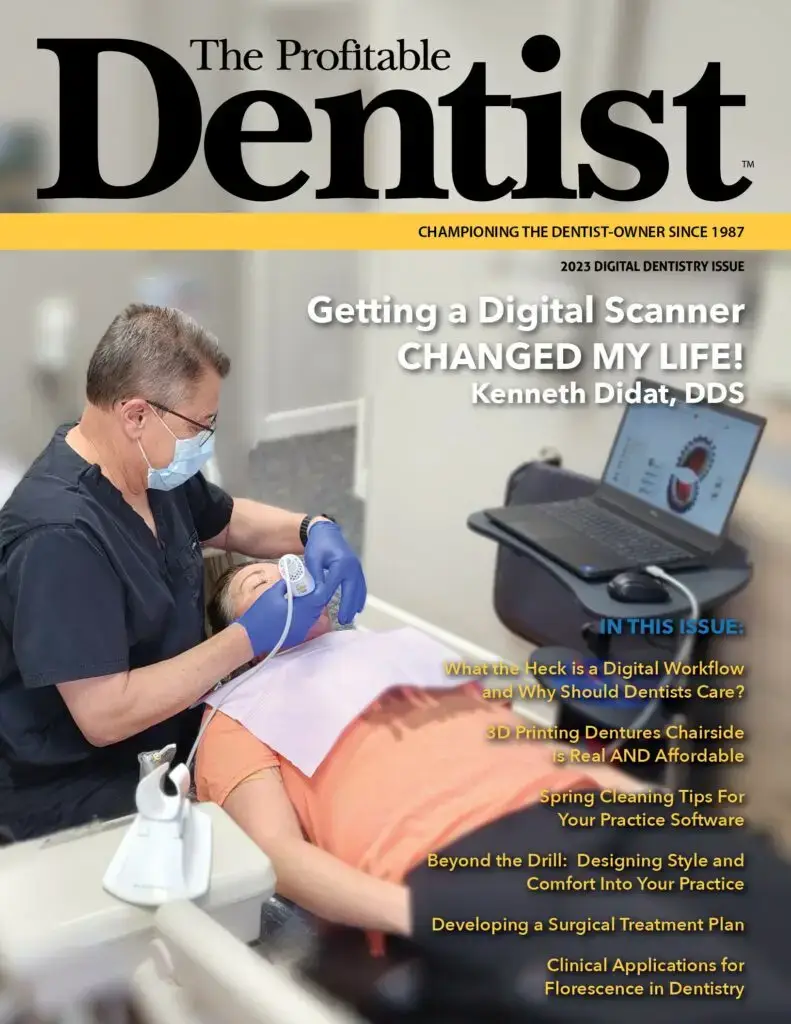There have been a lot of articles written that give dentists vague encouragement to allocate duties between team members as a way of lowering embezzlement risk. However, what most of these articles are lacking is any practical advice on how to do this. This lack of clear direction leaves a dentist in a predicament; they intuitively realize that an overconcentration of responsibilities in a single person is problematic but are not sure how to fix it.
This article will give three simple and implementable rules for how to allocate duties that should leave practice owners with clear direction on what to do next.
Why divide duties?
Many embezzlement cases we investigate involve a single employee who has total control over practice finances. This might be the office manager or perhaps a financial coordinator or receptionist. Performing all financial duties gives the opportunity both to steal money and conceal the defalcation. If someone can get away with this for a long period, the amount stolen will be significant.
Dividing duties properly forces a would-be thief to approach a co-worker for assistance. Normally, the need to involve someone else to steal is sufficient deterrent to stop someone from trying. We sometimes see “collusive fraud” with multiple people involved, but it is not common, and collusive fraud normally occurs when a connection between the perpetrators outside the office exists. Typically, they are related to each other or have a friendship that pre-dates their employment.
Therefore, a proper division of duties imposes a stop sign that many will not feel comfortable driving through. Statistics from the Association of Certified Fraud Examiners suggest that less than 50% of embezzlement involves more than one person, and our experience in dentistry is much more restrictive, with less than 10% of our cases involving collusion.
The Revenue Cycle
The term “revenue cycle” describes the series of activities that result in money going into your bank account. The revenue cycle consists of six activities:
- Treatment is entered into practice management software
- Patients and insurance companies are billed
- Payments are received
- Received payments are recorded in practice management software
- A day-end routine is performed where collections according to practice management software are balanced against bank deposits
- Funds are deposited
Our rules are designed to ensure that no person has the ability to both steal and conceal. Properly applied, these rules force collusion to steal.
The Rules
To divide duties properly, follow these three rules:
- Treatment is only entered by clinicians who were present when treatment was performed.
There has been a tradition in dentistry of clinicians entering information in charts and administrative staff turning clinical data into insurance claims and patient walkout statements. Before computerization, or when practice management software first appeared (and there was a single computer located at the front desk) this approach made sense. With every operatory having a computer and electronic charting, it no longer makes sense, yet many offices still send a routing slip or paper chart to the front desk entry into practice management software. In addition, human error when administrative staff who may not have clinical backgrounds (or may but were not present when the treatment was done) try to translate clinical notes into CDT codes, allowing staff with financial access to enter treatment creates potential embezzlement pathways that will not exist if treatment is entered by clinicians.
- Of the remaining tasks (billing, receiving payments, recording them, day-end balancing, and depositing funds) no team member should perform more than two tasks.
There are many offices where a single person is doing all five. This creates a situation where it is incredibly easy to steal, and if this person is not stealing, it is for one simple reason — they have chosen honesty. The point of systems is to move past a dependence on the fundamental honesty of staff.
- The two tasks performed should not be consecutive.
So, whoever gets the mail (i.e., receives insurance payments made by check) should not record the payments in practice management software. The person doing day-end balancing should not make bank deposits, and so on.
If you have a large practice with plenty of staff, rules 2 and 3 are easier to achieve. In a small practice, perhaps with one administrative person, division is more challenging. Involving clinical staff in some of the tasks (obvious choices are getting the mail and doing day-end balancing because these activities take place once daily) or the practice owner or spouse assuming some of the tasks are options for achieving division.
Don’t forget that different forms of payment follow different pathways through your practice, and that this framework needs to be applied to each type of payment. There is no “safe” method of payment that cannot be embezzled, and therefore all forms of payment require these rules to be applied.
For example, when insurance companies pay by electronic funds transfer, the money arrives directly at the bank and is neither “received” nor “deposited” by your team. However, an Explanation of Benefits does come to your practice, and the person receiving it should not be posting it to practice management software. And while there is no action needed to deposit EFT payments, there definitely needs to be a reconciliation of EFT collections according to practice management software with EFT amounts received by your bank. It may be a good idea to have a different person balance EFT payment (which probably could be done once per week or monthly) that the person responsible for balancing the “physical” deposit of cash and checks.
Final Thoughts…
Assuming that the practical issues with segregation of duties can be worked through, properly allocating tasks among you and your team is one of the most effective and cost-efficient ways of reducing exposure to embezzlement. This is an area where most practices can use improvements, and we have provided a series of simple rules to get there.

Co-authored by Amber Weber-Gonzales
Amber Weber-Gonzales, began working in the dental field as a Registered Dental Hygienist in 2005. With a background in accounting and her interest in the business side of dentistry, she moved into office management roles and ultimately into dental consulting. Before joining the Prosperident team, Amber discovered embezzlement taking place in one of her clients' offices, bringing to light her aptitude for the kind of investigative and preventative work she now performs for our clients.
Amber was recently the runner-up in the prestigious Spotlight on Speaking competition, featuring dentistry's best-emerging speakers, and has been published in Dentistry Today magazine. In June 2022, Amber was appointed the head of Prosperident's Proactive Services Group, which provides embezzlement prevention services to individual practices, groups, and DSOs.




